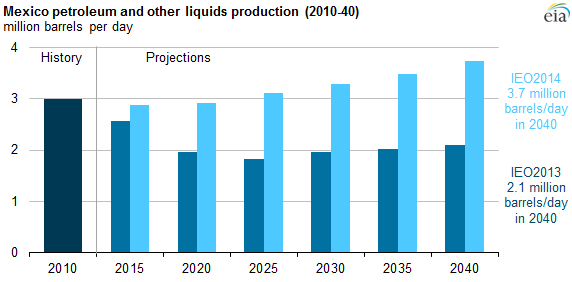The Mexican energy sector was nationalized in 1938. With the establishment of Petróleos Mexicanos, a state-run monopoly was formed. “Pemex” essentially ushered foreign investors out the door.
In the ensuing decades, Pemex earnings that plumped Mexican tax coffers came to account for about one-third of the national budget. Pemex took on the role of the goose that proverbially laid Mexico’s golden eggs. But the system was deprived of checks, balances, and healthy reinvestment, and was fed a steady diet of excess. Pemex eventually became a bloated bird, grown fat on reputed corruption and unwilling (or unable) to break free of the institutionalized inertia of convention and complacency.

